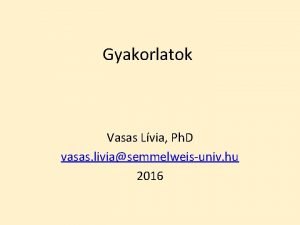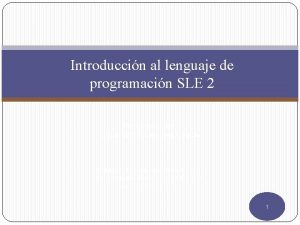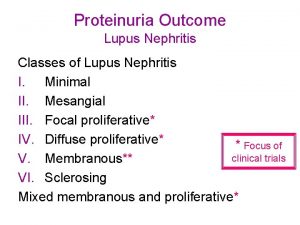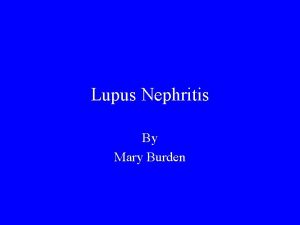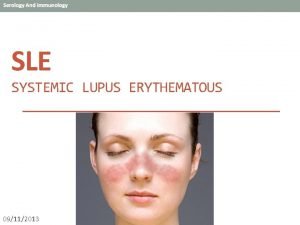Lupus Nephritis in Children Renal involvement in SLE







- Slides: 7

Lupus Nephritis in Children Renal involvement in SLE: 30% - 70% n Most diagnosis in adolescence, rare < 5 y/o n Classification of lupus nephritis: WHO classification : Table 1 n S/S: microscopic hematuria; proteinuria : mild to nephrotic range; hypertension; renal insufficiency n


Histological classification of lupus nephritis(1) n Active index: cellular or fibrocellular crescents, endocapillary proliferation, fibrinoid necrosis, karyorrhexis, hyaline thrombi, wire loops with subendothelial immune deposits, glomerular leukocyte infiltration, and interstitial mononuclear cell infiltrational n Active lesion: each grade 0 -3 to give an activity index grade 0 -24

Histological classification of lupus nephritis(2) n n n Chronicity Index: glomerular sclerosis, fibrous crescents, tubular fibrosis, and interstitial fibrosis These lesion did not response to treatment. Activity index > 12/24 or elevated chronicity index poor renal prognosis 10 - year renal survvial rate: Chronicity index: <2 100% 2~4 70% > 4 35% ESRD incidence : 20 %

Therapy according to classification(1) Class I: normal. n Class II: mesangial GN. Need only follow up. n Class III: Focal and segmental GN: n – Without nephrotic sx, therapy is only indicate for extra-renal disease. – With nephrotic sx, aggressive therapy is needed as class IV disease.

Therapy according to classification(2) Class V: membranous nephropathy: Ø Those with pure membranous nephropathy: good prognosis, need no therapy. Ø With nephrotic syndrome: with risk of thrombotic events. Ø With membranous nephropathy and proliferative lesions got the worst prognosis and should treated as class IV. n

Treatment of Lupus Nephritis(3) Cyclophosphamide pulse: 750 mg/m 2 as starting dose 1000 mg/m 2 ; if WBC> 3, 000/mm 3 n Given as monthly boluses for 6 months then every 3 months for 2 additional years n Hemorrhagic cystitis, nausea, vomiting transient alopecia and gonadal toxicity n Accumulative dosage > 200 mg/Kg toxicity n


